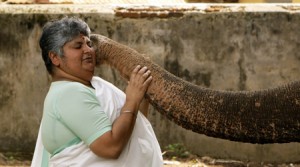
To our friends in and near Portland: The best archaeology-related films in the world are coming to Portland, starting Friday night, January 15. This is our annual event, ArchaeologyFest Film Series:Best of 2015! Please come to see some outstanding films and help us support TAC Festival 2016 by enjoying our PSU mini-Festival at the Fifth Avenue Cinema in Portland for four evenings (a different 2-hour show each evening), Friday, January 15; Saturday, January 16; Friday, January 22: and Saturday, January 23. These are the top films from The Archaeology Channel International Film Festival that took place in Eugene last May. All of them are award-winners from this international competition. And it’s just seven bucks for two hours of sheer enjoyment. Read on below for more details on the schedule and films. Please spread the word where you can. See the ArchaeologyFest Web page! And see our YouTube preview.
Rick Pettigrew
Archaeological Legacy Institute
www.archaeologychannel.org
ArchaeologyFest Film Series:
Best of 2015
A benefit for The Archaeology Channel
International Film and Video Festival
5th Ave. Cinema
510 SW Hall St., Portland
January 15/16 & 22/23, 2016
Doors open at 7 pm and programs begin at 7:30 pm on dates indicated. Admission $7. Tickets at the door. These are the best films from the 2015 edition of TAC Festival. (Film screenings for the 2016 edition of TAC Festival will take place in the Recital Hall at The Shedd Institute in downtown Eugene, May 11-15, 2016 [see below].)
Program A: Friday, January 15
Maximon: Saint or Devil (Guatemala) 66 min.
This film is a documentary about a controversial Maya deity who personifies good and evil simultaneously. Maximon, also known as a San Simon, or the drinking and smoking saint of Guatemala, is a mixture of ancient Maya beliefs and Christianity. The movie concentrates on the people who surround Maximon with their strong personalities, opinions and faith. Maximon is honored and loved because he performs miracles, but he is also feared and despised because he is used to cast curses that can result in death. Giving us a rare view into the rituals and fiestas honoring Maximon, the documentary leads us on a journey that is both joyous and terrifying. Ultimately Maximon transcends the duality of good and evil, reflecting the Maya cosmovision in which everything in the universe co-exists. (Honorable Mention in Audience Favorite competition)
Talking Stone: Rock Art of the Cosos (USA) 54 min.
Hidden away in the canyons of a top-secret military base on the edge of the Mojave Desert is the largest concentration of rock art in North America, perhaps in the world. Created thousands of years ago by a now-vanished culture, it represents the oldest art in California. Talking Stone explores these remote canyons and the mysteries surrounding these indelible images. Who created these rock art images? Why did they create these images? What does that say about their culture in the grand scheme of humanity? All of these questions are examined in further detail.
Program B: Saturday, January 16
The Mahouts of Kerala (Germany) 50 min.
In the midst of bustling traffic, wiry men can be seen leisurely weaving their elephants between cars and motorized rickshaws. Unperturbed by the noise and crowds around them, the mahouts ride atop their bulky creatures as they wander majestically through the city. For Hindus, elephants symbolize the highly revered god Ganesha, who is responsible for happiness and fortune. Over 5000 mahouts live in the state of Kerala in southwestern India. The men look after the elephants of temples and wealthy private citizens. The elephants are the highlight of every religious ceremony and festival in countless Hindu temples throughout the country. The Mahouts of Kerala is a window into the exotic world of the elephant-loving Princess Lakshmi and the mahout Kuttan, whose family has been caring for the Maharaja’s elephants for generations. (Honorable Mention in Audience Favorite competition )
On the Trail of the Far Fur Country (Canada) 81 min.
The Romance of the Far Fur Country was released in 1920, two years before the legendary film Nanook of the North. Upon rediscovering the documentary in a British archive, another film crew begins a journey to bring this lost film back to life, taking it to the northern communities where the film was originally shot. As people watch the footage from 1919, something special happens. Images come to life; people recognize their family members, their landscapes and their lost traditions. Contrasting then and now, On the Trail of the Far Fur Country is an intimate portrait of Canada and its Aboriginal people and a chronicle of how life in the North has changed in the last century. (Honorable Mention by Jury for Public Education Value; Honorable Mention by Jury for Inspiration; Honorable Mention by Jury in Best Film competition; Honorable Mention in Audience Favorite competition; Special Mention by Jury for best archival footage)
Program C: Friday, Janaury 22
Roman Engineering: Aqueducts (Spain) 58 min.
This documentary relives the moment in history when the decision was taken to build the aqueduct of Nemausus (modern Nimes in France). An engineer is commissioned to decide where to build the town and to provide it with an aqueduct to guarantee a water supply. Isaac Moreno allows the viewer to see all this through the eyes of that engineer. By means of precise and elaborate computer simulations, combined with superb pictures taken from the air and land, he helps us understand the structures and engineering needed to turn the Nimes aqueduct into a reality. Armed with that knowledge, he then takes us on a dizzying journey across the whole Roman Empire, where other breathtaking structures were built and challenges met with amazing technical solutions. (Best Animation & Effects by Jury; Honorable Mention by Jury for Public Education Value; Honorable Mention by Jury for Script; Honorable Mention by Jury for Inspiration)
Saving Mes Aynak (USA) 63 min.
Follow Afghan archaeologist Qadir Temori as he races against time to save a 5,000-year-old archaeological site in Afghanistan from imminent demolition. A Chinese state-owned mining company is closing in on the ancient site, eager to harvest $100 billion dollars worth of copper buried directly beneath the archaeological ruins. Only 10 percent of Mes Aynak has been excavated, though, and some believe future discoveries at the site have the potential to redefine the history of Afghanistan and the history of Buddhism itself. Qadir Temori and his fellow Afghan archaeologists face what seems an impossible battle against the Chinese, the Taliban and local politics to save their cultural heritage from likely erasure. (Best Public Education Value by Jury; Honorable Mention by Jury for Inspiration; Best Film by Jury)
Program D: Saturday, January 23
Abu Haraz (Poland) 73 min.
Abu Haraz is a small village in the middle of the desert in North Sudan. The construction of a huge dam on the Nile has interfered with the age-old, natural rhythm of the lives of its residents. The film makers have spent several years with them, observing their vain attempts to turn back fate and stop the construction of the dam in order to continue their way of life. Struggle, loss, pain, sacrifice, perseverance, and dedication to their natural lifestyle are all evident in this film. (Honorable Mention by Jury for Cinematography; Special Mention by Jury for best documentation of cultural change)
Agave Is Life (USA) 60 min.
Texas-based archaeologists Meredith Dreiss and David Brown take the viewer on a 10,000 year visual exploration of the symbiotic relationship between agave and the humans who have depended upon it. Agave Is Life, narrated by Edward James Olmos, delves into the ceremonial and sacred importance of this multi-purpose plant, native to the Americas. From the ancient past to the present we learn how agave became embedded in myth, religion and cultural identity. The film ends with a look to the future as today’s scientists worry about the loss of species and related human folkways—emblematic of planet-wide concerns about sustainability and our environment. (Best Narration by Jury; Honorable Mention by Jury for Animation & Effects; Honorable Mention by Jury for Public Education Value; Best Script by Jury; Honorable Mention by Jury for Cinematography; Honorable Mention by Jury for Music; Honorable Mention by Jury in Best Film competition; Audience Favorite)
TAC Festival 2016 screenings to be held in the Recital Hall at The Shedd Institute
ALI announces the next edition of The Archaeology Channel International Film and Video Festival, May 11-15, 2016, in the Recital Hall at The Shedd Institute, 868 High Street (for film screenings, May 12-15), and at the Hilton Eugene and Conference Center, 66 East 6th Avenue (for our Conference on Cultural Heritage Media, May 11-15), in downtown Eugene, Oregon. TAC Festival will bring to Oregon the world’s best films on archaeology, ancient cultures, and indigenous peoples as well as people from far and wide to discuss and network about cultural heritage media. Please join us in welcoming to Eugene the people of the world for this cinematic celebration of the human cultural heritage.

